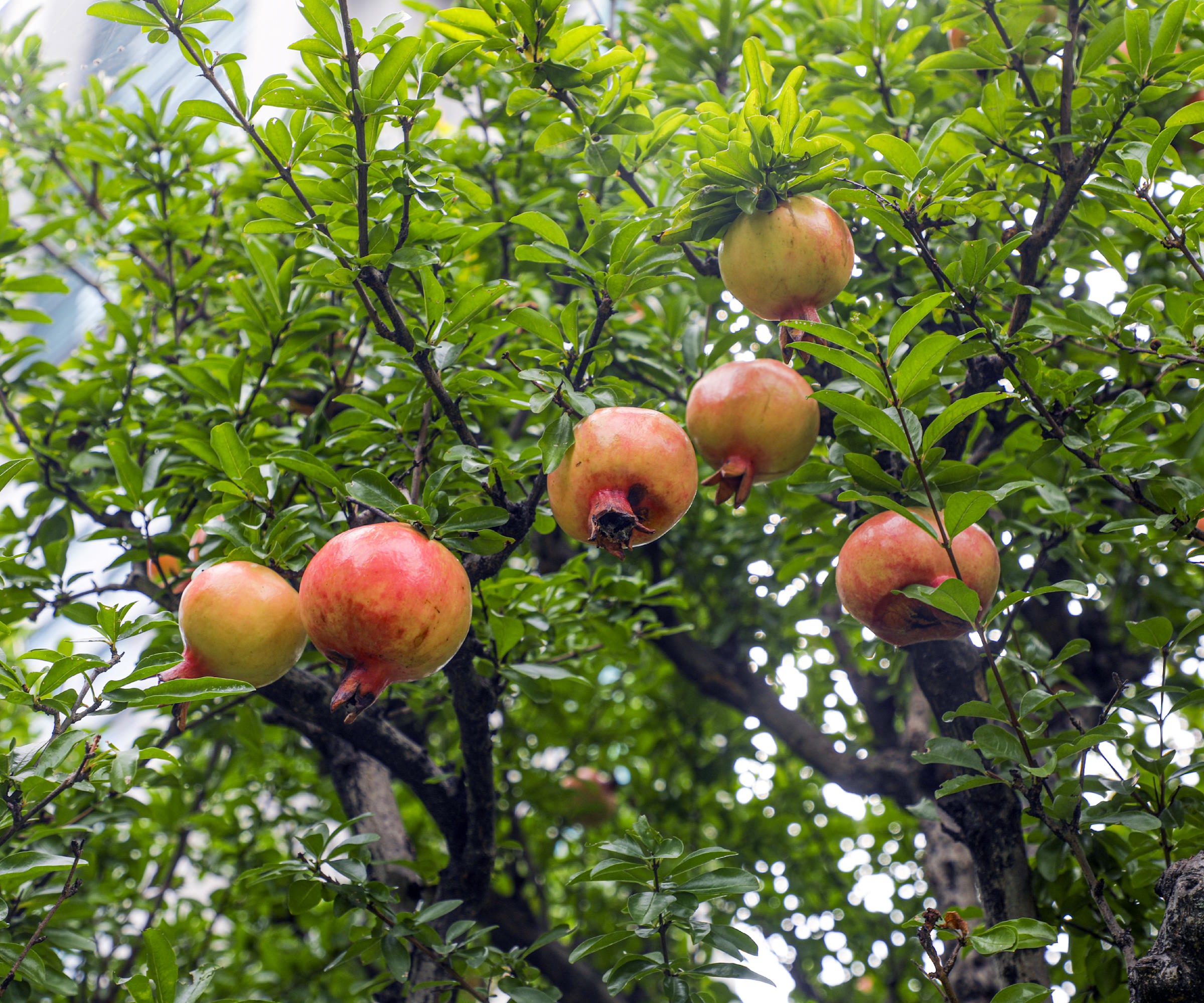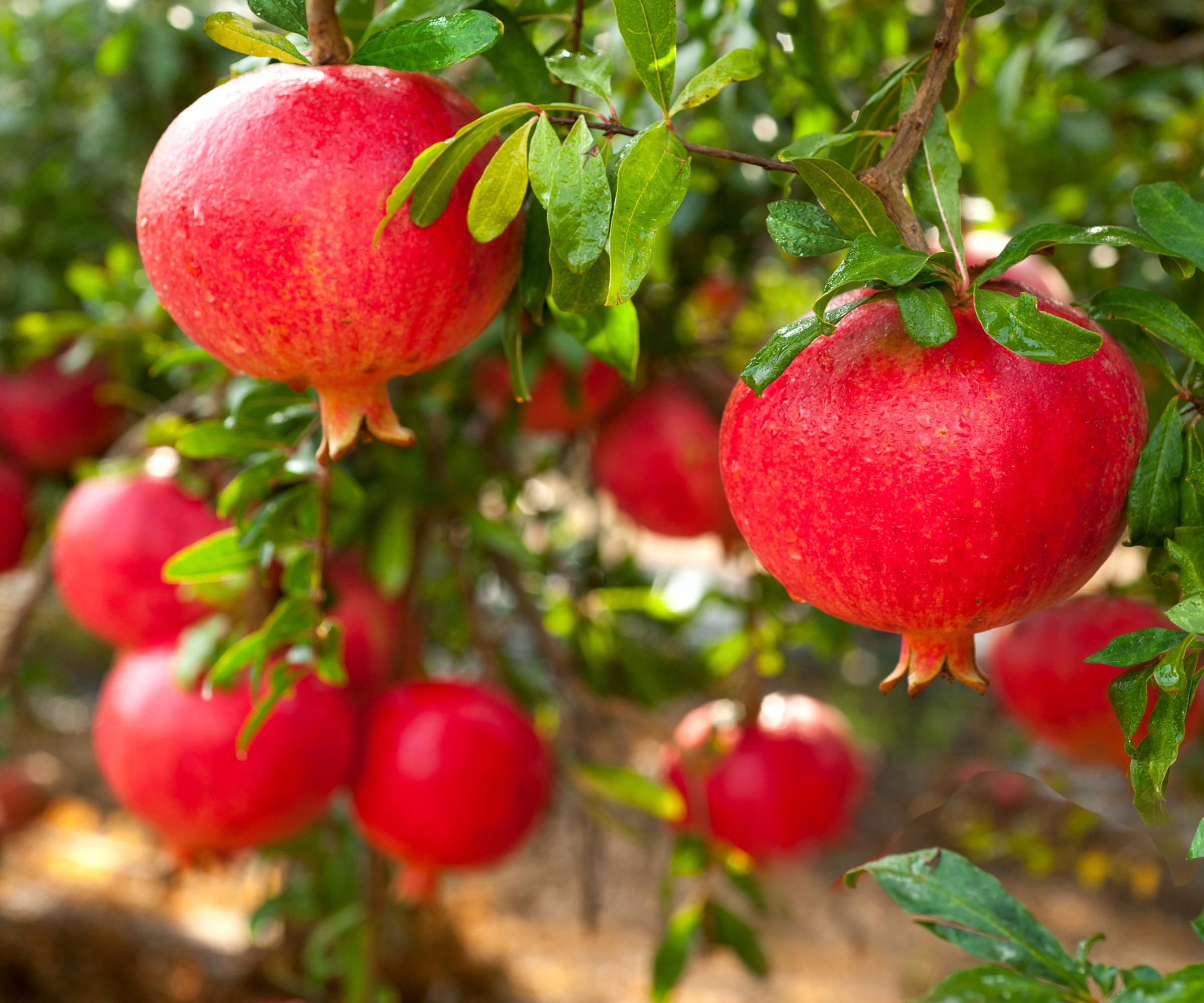
Pomegranates are frost-hardy plants that can either be grown as a tree or a bush. They do not require lots of pruning, with only a few key steps to follow each year to keep them healthy and producing fruit.
The plants come in a wide range of sizes, from full-size trees capable of reaching 20 feet in height to dwarf cultivars of pomegranates that are suited to small backyard ideas. Pomegranates can either be grown for their attractive bark and foliage, or cultivated for their ever-popular fruits.
However you are growing pomegranates in your garden, there are several real benefits to heading out and pruning them twice a year. It should be a simple and quick task to complete and your pomegranate will repay you with a crop of delicious, pink fruits.

Tools needed for pruning pomegranates
Only a few common garden tools that most gardeners should have are needed for pruning pomegranates. This includes pruning shears, loppers, and also a pruning saw for larger branches that need to be removed.
Any tools used for pruning need to be clean and sharp, this will make the pruning process easier, reduce damage to the plant, and also avoid spreading potentially harmful disease.
Pomegranates do have thorns on their branches, so always wear safety goggles, long sleeves, and a thick pair of gardening gloves for protection when doing any pruning on them.

How to prune a pomegranate tree
Pomegranate trees do not require lots of regular pruning once established, which tends to come after three years of being planted. For the first few years, you focus on developing the shape. Pomegranates can either be grown as a single-stemmed fruit tree, or left to be multi-stemmed as they grow in the wild.
To develop a single-stemmed pomegranate, keep one strong shoot in year one and remove the rest. For a multi-stemmed tree, choose a few strong shoots to leave and grow on. In years two and three, you can cut back all side branches back by a third to help the tree bush out and remove all growth off the bottom third of the main trunk.
Once the tree is established, the pruning is a simple process. Vicky Popat, the co-founder of PlantOGram, recommends three key steps to take when pruning pomegranate trees in late winter or early spring. She says to think of pruning ‘like giving your tree a healthy and stylish haircut’.
- Clear out the clutter - Snip away the sad branches (dead, diseased, or damaged wood) and it's like a fresh start for your tree
- Open up space - Let the light in by thinning dense areas of over-crowded branches
- Keep it balanced and open - Trim long branches to keep things neat and encourage bushy, joyful growth
As well as pruning when the plant is dormant, pomegranates do produce a lot of suckers and benefit from having these removed in the summer. Suckers, and also upright water sprouts that can vigorously appear, divert vital energy away from the tree so should be pruned completely off at least once a year.

Wonderful Pomegranate Tree (Punica granatum 'Wonderful') is a hugely popular variety of pomegranate that can grow to a height of 8-12 feet and is capable of producing over 100 pomegranates each season
How to prune a pomegranate bush for fruit production
Much of the pruning of a pomegranate bush will mirror that for pruning a tree, including removing dead, diseased, and damaged branches along with suckers. If the goal with growing the bush is to get a large harvest of fruits, then a focus should be on making sure the shrub has the most productive branches.
Pomegranates fruit best on spurs growing on 2-3 year-old wood and then the fruiting slows down once the branches continue to age.
Aaditya Bhatta, Editor and Founder of Plants Craze, says that you want to ‘promote a balance between new and old growth’ so that the bush has a good combination of one, two, and three-year-old wood.
He advises: ‘Remove older, unproductive branches to make space for new growth, which is where most of the fruit production occurs.’
By selectively removing older and less-productive wood, younger fruiting branches get more energy to grow healthily and develop fruit. Trimming back the tips of branches on younger wood can promote the growth of new shoots and fruiting spurs to carry fruit the following year. Make any cuts at a 45-degree angle just above an outside-facing bud, to promote outward growth of any new shoots.
‘Pruning should also aim to create an open canopy that allows sunlight and air to reach all parts of the plant. This encourages healthy fruit development and reduces the risk of fungal diseases,’ adds Aaditya.
Any branches that are growing inwards towards the centre of the bush should be removed along with branches that grow towards the ground, as these will droop to the soil when full of fruit and it may lead to the fruit rotting.
After pruning, it can be beneficial to mulch around the bush, to smother weeds and improve the moisture retention, or apply a balanced fertilizer to the bush to help it recover and grow strongly when it comes out of dormancy. One example of a balanced feed you could use is the Pennington Ultra Green All Purpose Plant Food 10-10-10 available at Walmart.
FAQs
Can you over prune a pomegranate tree?
Pomegranate trees need only minor pruning each year and they can be kept compact and manageable through annual pruning. Best practise is to follow the one-third pruning rule and not remove more than a third of the branches each year, as many trees and shrubs can struggle to recover or may put out straggly and weak growth as a response to the shock of heavy pruning.
Hard pruning a pomegranate will affect the level of fruiting, as you will be removing lots of the most productive fruiting wood. Overcutting can be a fruit tree pruning mistake that can not only reduce the production of fruit, but weaken the tree as a whole.
Pomegranates can also be grown in pots as part of a container garden and that helps make them one of the best fruit trees for small gardens. Growing fruit trees in pots restricts their growth and helps to keep the pruning simple year-on-year.







